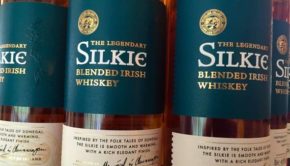Little and often is winning the race

With consumers increasingly determined to 'get in and get out' as quickly as possible, Fionnuala Carolan examines why the future is looking good for convenience and smaller store formats
15 October 2014
At the Kantar ‘Mining for Growth’ conference which took place in Croke Park on 24 September, one of the speakers discussed the importance of making your brand famous, referring to food and drink products, but I think it’s basically the same principle for a retailer. Differentiating your brand from the next is a way to help consumers make a choice between you and your competitor.
For example, Marks and Spencer is famous for high quality ready-to-eat food; Aldi and Lidl are famous for their low prices; SuperValu has made itself famous for supporting Irish food producers, Dunnes is famous for being a good mix of value and quality on food, homewares and clothing. But what is Tesco famous for? It used to be famous for its low prices but the predatory promotional activity of the other supermarkets has meant that it doesn’t really stand out any more. And it is famous for its large format stores but the new phenomenon of shopping little and often has made these stores seem somewhat redundant. Mothers, the number one shopper in most households and the person who makes around 85% of the purchasing decisions for a home*, views shopping as a chore and one that most want to get done as fast as possible. While our population used to be cash rich, time poor we are now mostly cash poor and time poor. We want to ‘get in and get out’ in as fast a time as possible. Navigating your way through a large supermarket takes a long time and you usually end up acquiring a host of impulse purchases, which most shoppers on tight budgets try to avoid at all costs these days. Tesco’s Metro stores are where the growth lies for the company, in my opinion. In these stores, they have concentrated on an improved fresh food offering and there seems to be more staff on the floor. Two really impressive Tesco stores are Tesco Park Pointe in Dun Laoghaire and Tesco Metro in Terenure in Dublin. They are not supermarkets per se and they are not convenience stores. They are something in between and are easy to navigate, they offer a good range of produce and supply ample parking. Consumers have changed the way they shop and it’s not uncommon to visit up to four different shops in a week in order to cut down on waste and control their spend.
In this issue Dan White (page 16) speaks about how the discount model is affecting the whole industry. He suggests cutting back on lines in order to become more profitable. Although this makes sense, it’s not something I would relish as a consumer. We need competition and we don’t want companies acquiring a monopoly on certain food categories. The Blas na hÉireann Awards, which took place the first weekend of October in Dingle are a testament to the wonderful, quality food that is being produced in Ireland at the moment and these small producers need to be encouraged rather than pushed out of the market. It seems like the three buzz words in retail right now are small, local and fresh and the multiples need to change tack to recapture the consumers they have lost.
Fionnuala Carolan
Editor
*(Source: Mindshare/Ogilvy & Mather)



 Print
Print





Fans 0
Followers